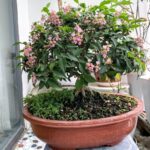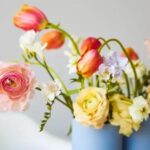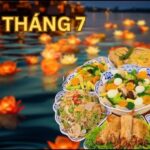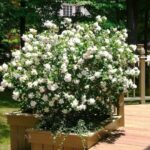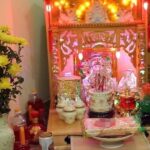Flowers are an integral part of Vietnamese worship, symbolizing the sincerity of the host with their fragrance and creating a pure and sacred atmosphere. Therefore, offering flowers is essential during the incense-burning ceremony.
Should one offer one or two vases of flowers?
While some hosts prefer a single vase, others opt for two. In Eastern worship, odd numbers are typically chosen, as they represent yang energy, signifying growth and bringing good fortune. Yang is associated with the living, offering blessings to the deceased.
Consequently, when preparing offerings such as tea, sweets, fruits, or chicken and sticky rice, one would use odd numbers: one chicken, one plate of sticky rice, three oranges, five apples, a bunch of bananas, and three incense sticks, for example. However, some items on the altar come in pairs to maintain symmetry, such as two candle cups, two vases, or two cranes.
Usually, one vase of flowers is sufficient for each ceremony, but if the host wishes to emphasize symmetry and has sufficient space on the altar, they may place two vases. However, when placed on the offering tray, only one vase should be used.
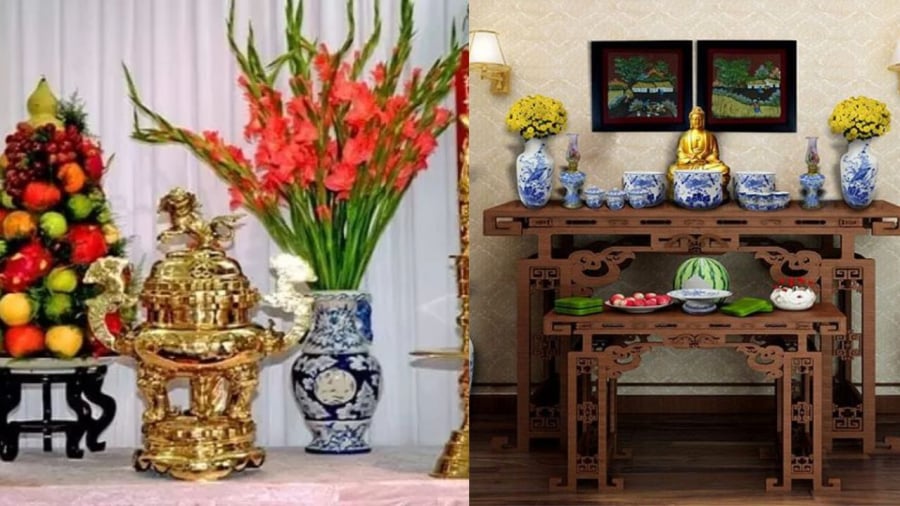
One or Two Vases of Flowers Can Be Offered
Where should the vase(s) be placed in relation to the offerings?
When arranging items on the altar, it is customary to follow specific rules. In spiritual worship, the rule of “East for vases, West for fruits” applies, meaning the vase(s) should be placed in the East, and the fruit platter in the West, both positioned according to the incense burner’s location.
The East and West directions are determined as follows: when facing the altar, the left side is East, and the right is West (relative to the portrait’s left and right sides if there is one on the altar).
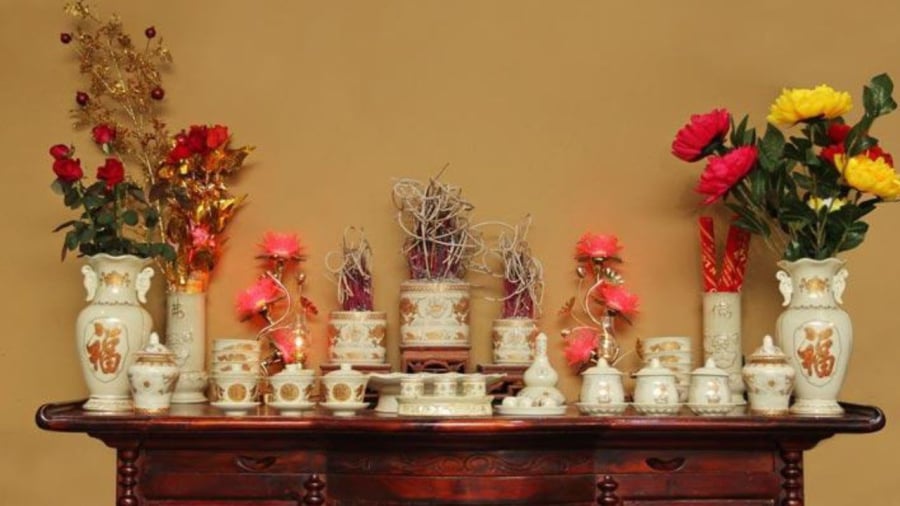
Place Two Vases Symmetrically or One on the Left
Thus, if using a single vase, it should be placed on the left side of the altar, with the fruit platter on the right. If using two vases, they should be placed symmetrically on both sides. The fragrant flowers represent a connection to the past, and according to ancient beliefs, an east-facing home would allow the east wind to carry the scent throughout the altar.
Additionally, in the five-element theory, the East corresponds to wood, making the placement of flowers in the East a logical choice. This arrangement also symbolizes the host’s hope for blooming flowers and fruitful results, bringing wealth and peace.
This information is based on spiritual beliefs and practices.

